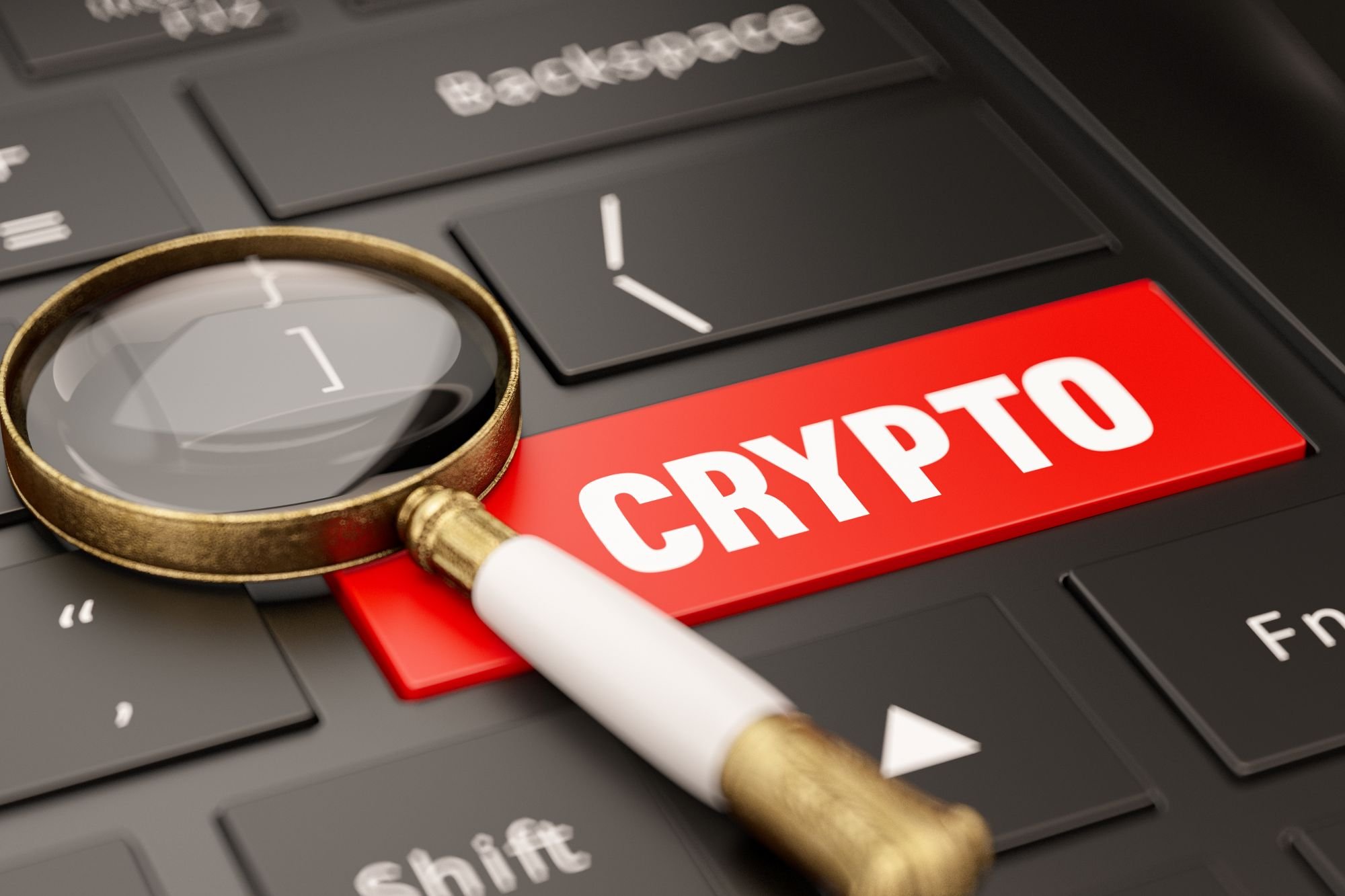Compared to traditional asset classes, nothing has come particularly close to matching the annualized return of stocks over the last century. But over the trailing decade, cryptocurrencies have completely blown Wall Street's major stock indexes out of the water on a total return basis.
Though most of the glory in the digital asset arena rightly goes to Bitcoin (BTC 1.99%), which still enjoys a number of first-mover advantages, other tokens are garnering plenty of attention and buzz, such as XRP (XRP 5.33%). XRP was developed by Ripple to serve as the bridge currency for its cross-border payment platform.
Over the trailing-three-year period, XRP has rallied by close to 740% and become the third most-valuable cryptocurrency. It's also the recipient of a lofty price target from one of Wall Street's most-respected digital asset analysts, Geoff Kendrick of Standard Chartered.

Image source: Getty Images.
According to a report published earlier this year by Kendrick, XRP is headed to $5.50 per token in 2025. Kendrick cited the growing adoption of XRP as a bridge currency in cross-border payments, the conclusion of Ripple's legal battle with the U.S. Securities and Exchange Commission, and the expected emergence of spot XRP exchange-traded funds (ETFs), among other factors, as his reasons to be optimistic.
While even $5 per token would mark a nice psychological milestone for the coin that's outpacing Bitcoin on a total return basis in recent years, it's more likely to be a pipedream than a reality in 2025 for five reasons.
1. Banks aren't required to use XRP
Though emotions and technical analysis (using previous chart patterns and support/resistance levels to predict future directional moves) tend to be core short-term price drivers in the cryptocurrency space, XRP's primary catalyst is the expectation that financial institutions will jump at the chance to utilize Ripple's payment platform where XRP is the intermediary currency. With Ripple's platform, financial institutions can validate and settle cross-border transactions in three to five seconds, with an exceptionally low cost per payment.
But there's one pretty sizable problem: not all of Ripple's payment solutions require XRP be used as the bridge currency. For XRP to push to $5 per token in 2025, it's going to require a sizable uptick in transactional demand from financial institutions. Yet if there's nothing tethering banks to XRP within Ripple's ecosystem, there's little guarantee XRP will enjoy any sustained momentum.

CRYPTO: XRP
Key Data Points
2. The adoption rate isn't as impressive as you might think
To build on the previous point, a majority of banks have been hesitant to utilize Ripple's payment technology for cross-border transactions. More than 300 global financial institutions have used RippleNet to complete a payment.
In comparison, over 11,000 financial institutions around the globe are currently relying on the Society for Worldwide Interbank Financial Telecommunication (SWIFT) for cross-border payments, among other financial solutions. Though SWIFT is slower and costlier than relying on Ripple's payment network, it's established and has been used by banks for decades. This isn't going to change overnight (or before the end of 2025), even with Ripple's legal woes having cleared.
3. Alternate options for cross-border payments exist (some of which may be faster or cheaper)
Another issue that can keep XRP tokens far away from the psychologically important $5 level is that it's not even guaranteed to be the best cross-border payment solution. Granted, validating and settling transactions in three to five seconds at a cost of a fraction of a penny would be a vast improvement over how things currently operate. However, there are other digital networks that can accomplish this feat potentially faster and/or cheaper than XRP Ledger.

CRYPTO: SOL
Key Data Points
For instance, Solana (SOL 0.79%) is becoming an increasingly popular option for cross-border transactions due to its low-cost structure and ability to validate and settle payments in an average of 400 milliseconds. There's also Stellar (XLM 5.21%), which has primarily been used as a peer-to-peer payment platform, rather than a network chosen by financial institutions. Nevertheless, Stellar can complete transactions in two to five seconds at a microscopic cost.
Long story short, RippleNet isn't a runaway success story.
4. XRP lacks stand-alone value
A fourth headwind that investors wouldn't be wise to overlook is that XRP generally lacks stand-alone value.
The world's largest cryptocurrency, Bitcoin, tends to be adored for its perceived supply scarcity of 21 million coins when fully mined, and therefore its hedge against money supply inflation. Meanwhile, Ethereum (ETH 0.82%) shines thanks to its utility. The Ethereum blockchain is a breeding ground for the development of decentralized applications and smart contracts.
The value with Ripple lies in the development of its payment platform, of which XRP is simply an intermediary for some (not all) transactions.

Image source: Getty Images.
5. Crypto is coupled to a historically expensive stock market
Last but certainly not least, digital currencies have failed, time and again, to decouple from the stock market. While mirroring the current risk-on approach with stocks can be viewed as a positive within the crypto arena, headwinds are mounting for Wall Street.
Last week, the S&P 500's Shiller price-to-earnings ratio hit its third-priciest multiple (nearly 39) when back-tested 154 years. The only two times the stock market has been relatively pricier, the S&P 500 eventually (keyword!) lost 49% and 25% of its respective value on a peak-to-trough basis.
In other words, Wall Street has consistently shown that premium valuations aren't tolerated over an extended period. If cryptocurrencies like XRP tend to ebb-and-flow with the stock market, a crypto winter could be right around the corner.










